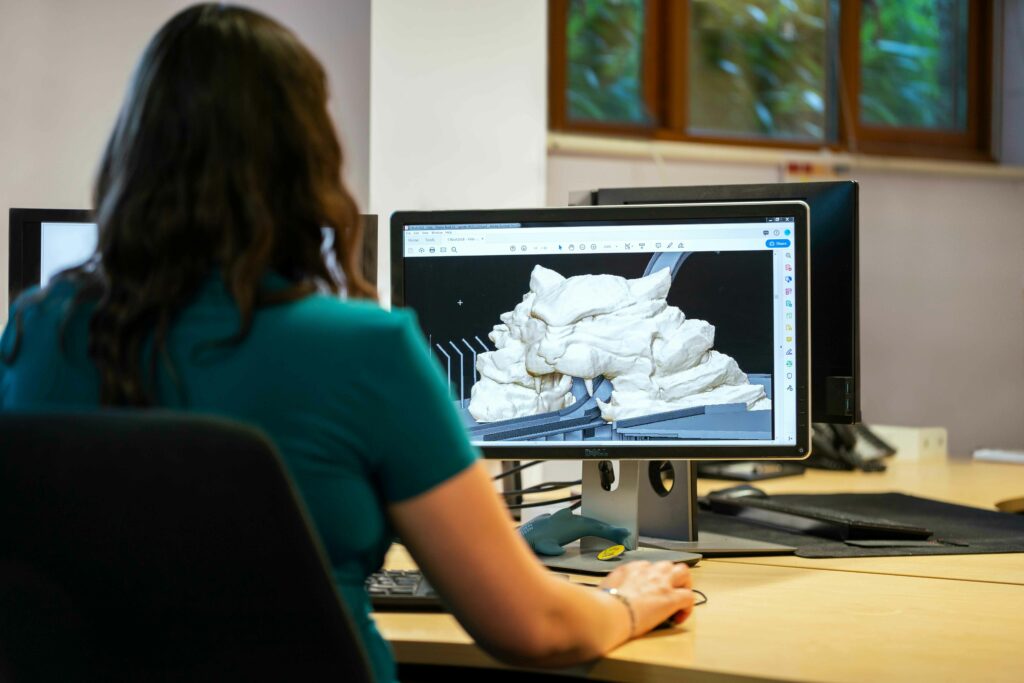As we dive into 2025, the world of 3D modeling continues to evolve at an impressive pace. Whether you’re a beginner looking to dip your toes into 3D design or a seasoned professional seeking the perfect tool for your next project, this guide will help you navigate the landscape of both free and paid 3D modeling software.
Free Options
1. Blender
The crown jewel of open-source 3D modeling software has only gotten better in 2025. Blender continues to dominate the free software space with its comprehensive feature set that rivals many paid alternatives. Recent updates have brought improved UV unwrapping tools and an enhanced user interface that’s significantly more approachable for beginners.
Best for: All-around 3D work, including modeling, animation, rendering, and game development Key Features:
- Robust modeling toolkit
- Advanced sculpting capabilities
- Built-in video editor
- Node-based materials system
- Python scripting support
2. Tinker CAD
Autodesk’s browser-based 3D modeling tool remains the go-to choice for beginners and educational purposes. Its intuitive interface using basic geometric shapes makes it perfect for those just starting their 3D modeling journey.
Best for: Beginners, educational purposes, and simple 3D printing projects Key Features:
- Browser-based operation
- Simple drag-and-drop interface
- Direct STL export for 3D printing
- Extensive tutorial library
3. Sketchup Free
The web-based version of SketchUp continues to be a powerful tool for architectural visualization and interior design. The 2025 version includes improved cloud storage integration and better collaboration features.
Best for: Architectural design, interior visualization, and woodworking Key Features:
- Extensive component library
- Real-time shadow studies
- Integration with various web-based plugins
- Robust measuring tools
4. Fusion 360 (Free for Personal Use)
While technically a paid software, Fusion 360’s personal use license offers a comprehensive set of features for hobbyists and makers. The 2025 version brings improved generative design capabilities and enhanced simulation tools.
Best for: Product design, engineering, and manufacturing Key Features:
- Parametric modeling
- Advanced assembly tools
- Integrated CAM functionality
- Cloud-based collaboration
5. FreeCAD
This open-source parametric modeler has seen significant improvements in stability and feature set. It’s particularly strong for technical and mechanical design work.
Best for: Technical modeling, engineering projects Key Features:
- Parametric history
- Technical drawing capabilities
- Robot simulation
- Architecture workbench
6. Wings 3D
A specialized subdivision modeler that excels in creating organic shapes and characters. Its simplicity makes it a great choice for specific modeling tasks.
Best for: Subdivision modeling, character creation Key Features:
- Advanced subdivision tools
- Intuitive context-sensitive interface
- Multiple material support
- Basic UV mapping
7. OpenSCAD
The programmer’s approach to 3D modeling continues to find its niche among users who prefer code-based design. Recent updates have improved performance and added new programming features.
Best for: Programmatic design, mechanical parts Key Features:
- Script-based modeling
- Parametric design capabilities
- Boolean operations
- Integration with 3D printing workflows
8. SculptGL
This browser-based sculpting tool has evolved to include more professional features while maintaining its accessibility.
Best for: Digital sculpting, character modeling Key Features:
- Real-time sculpting
- Multiple brush types
- Basic texturing
- WebGL-based performance
9. Clara.io
A full-featured browser-based 3D modeling tool that’s particularly strong in collaborative workflows.
Best for: Online collaboration, basic to intermediate modeling Key Features:
- Real-time collaboration
- Cloud rendering
- V-Ray integration
- Asset library
10. BforArtists
This Blender fork focuses on improved usability and a streamlined interface while maintaining compatibility with Blender files.
Best for: Artists transitioning to Blender Key Features:
- Simplified interface
- Improved tool organization
- Compatible with Blender files
- Specialized artist workflows
Paid Options
11. ZBrush
The industry standard for digital sculpting has continued to evolve with improved performance and new features for 2025.
Best for: High-end digital sculpting, character creation Key Features:
- Advanced sculpting tools
- Dynamic subdivision levels
- Extensive brush library
- Industry-standard workflow integration
12. Adobe Substance 3D Assets
Part of Adobe’s 3D ecosystem, this tool provides access to thousands of customizable 3D models and materials.
Best for: Asset creation, material design Key Features:
- Extensive asset library
- Parametric materials
- Adobe Creative Cloud integration
- Real-time rendering
13. Pacdora
A newer entrant to the market that’s gained traction for its innovative approach to parametric modeling.
Best for: Architectural design, product visualization Key Features:
- AI-assisted modeling
- Cloud-based collaboration
- Real-time rendering
- Parametric components
14. Adobe Substance 3D Painter
The gold standard for texture painting continues to dominate its niche with powerful features and workflow improvements.
Best for: Texture painting, material creation Key Features:
- Advanced painting tools
- Smart materials and filters
- Multiple UV tile support
- Physical-based rendering
15. Mudbox
Autodesk’s sculpting and texture painting tool maintains its position as a solid choice for digital artists.
Best for: Digital sculpting, texture painting Key Features:
- High-resolution sculpting
- Advanced texture painting
- Normal map creation
- Integration with Maya and 3ds Max
Conclusion
The 3D modeling software landscape in 2025 offers something for everyone, from beginners to professionals. Free options like Blender and FreeCAD continue to close the gap with paid solutions, while professional tools like ZBrush and Substance 3D Painter maintain their edge through specialized features and workflow refinements.
When choosing your 3D modeling software, consider your specific needs:
- For beginners: Start with TinkerCAD or SketchUp Free
- For general 3D work: Blender offers the most comprehensive free solution
- For professional sculpting: ZBrush or Mudbox
- For technical modeling: Fusion 360 or FreeCAD
- For texture work: Substance 3D Painter
Remember that many of these applications offer free trials, so don’t hesitate to experiment with different options before making a final decision. The best software for you will ultimately depend on your specific needs, workflow preferences, and budget constraints.
